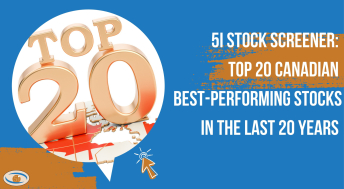Dividends Are All You Need
Isn't there a financial crisis still going on in Europe? Isn't there the threat of a War with Iran? Try telling that to corporations, who continue to report record earnings and reward investors with higher dividends. We have counted so far 35 companies in North America that have raised their dividends this month.
The following summaries a recent dividend article we wrote in the National Post:
As the RRSP season buying frenzy hits its peak this week, we urge investors to remember the basics. Many individuals, regrettably, use their RRSP as a speculative vehicle. Like trying to fund your retirement via a 6/49 lottery ticket, you might buy more speculative stocks for your RRSP in order to hit the ‘big score’ and boost your retirement account.
Word of advice: Don’t. Even though dividends have a better tax treatment outside of your RRSP, they can still work wonders inside of a registered plan. If you can find a stock that is growing, pays a dividend, and the dividend is also growing, then your RRSP will be significantly better off than by owning fixed-income securities or lottery-ticket stocks.
A recent book by Daniel Peris (The Strategic Dividend Investor) gets this point across well. In it, the author argues, and successfully backs up, the theory that dividends account for 89% of all of your investment returns. Most financial advisory firms would instead state that dividends, while important, account for only 40% to 50% of your total investment returns.
The key to owning a good dividend stock is to (a) not worry too much about short-term stock movements, as long as the dividend is still secure and growing and (b) Keep your dividend stocks for the long term. Many individual investors almost never follow the latter point, despite repeated reminders by tons of smart investors.
Take Walmart, (WMT on NYSE) for example. Most investors consider it a dud because the stock price has gone pretty much nowhere for upwards of 10 years. However, take a look at the dividend record: In 2000, it paid $0.23 per share. This dividend has now grown to $1.46 per share today. Who cares if the stock hasn’t moved much? The company has paid you $6.88 or 16% of where the stock price was since then, and the dividend has increased five-fold. Not great, but better than most non-dividend payers, which have been completely flat for a decade (on average).
What are the best dividend-growth stocks in Canada right now? A recent Bloomberg screen shows quite a few stocks with impressive five-year dividend growth rates.
Rogers Communications (RCI.B on TSX) now pays $1.42 in dividends per share, up from $0.10 per share in 2003. Its five-year dividend growth rate is 79%. Last week it raised its dividend again, this time by 11%.
Shaw Communications (SJR.B on TSX) now pays $0.97 per share, up from $0.60 per share, in 2003. Its five-year dividend growth rate is 22%
Telus now pays $2.32 per share annually, up from $0.60 per share in 2002. Its five-year dividend growth rate is 13%.
Looking at the above, there seems to be an abundance of telecommunications companies. Certainly, that has been a strong area of industry growth, with resulting dividend improvements.
Another name on the list is Glentel Inc. Its dividend has grown from $0.15 per share in 2007, to $0.40 per share today. It has also paid $0.58 per share in special dividends in that time. Its five-year dividend-growth rate is 65%. Don’t look for telecommunications diversification from this one though, as its main business is selling mobile phones.
As you shop for investments for your RRSP, keep these and dividend growth companies in mind. Another benefit of names like these, of course, is that, once you own them, you will never have to pay ‘management fees’ to hold them, unlike a mutual fund.





Comments
Login to post a comment.